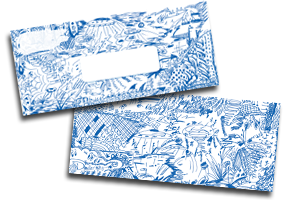In any direct mail campaign, it is important to have a decent list of people to send your mailer out to, but 98% of the time, these prospective clients won’t even respond. Unfortunately, a surprising 44% of recipients won’t even open your letter – it will go straight into the trashcan. So, the question remains – what is the secret to getting your direct mail not only opened and responded to but also to provide quality sales leads?
In my many years of owning my own marketing firm, I have seen both good and bad direct mail campaigns, but there is one perfect recipe I have found that can provide a response rate of 10-20% or even higher. One of my clients, a cabinetry remodeling business that earns $40,000 - $60,000 per ticket, was even forced to stop mid-campaign because they were receiving more leads than they could handle.
So, here’s the answer to your direct mail problems:
1) First and foremost, provide an incentive. People will be much more likely to give you their information if they are going to get something in return. The most important aspect of achieving such a high response rate is that you offer the recipient a free $5 gift card for lunch, gas, coffee, or something else that almost everyone partakes in. A $5 gift card might not seem like that much, but it is a free lunch for the recipient and all they have to do is provide you with a little bit of personal information.
For you, the cost of the $5 gift cards may add up, but think about the sales you will get from all of the personal information you receive. Now, you have hot leads on everyone who gave you their information and you also have quality addresses for future mailings. If you send 100 direct mail, get 20 responses (only $100 in gift cards), and you make 10 sales with even as low as a $5000 ticket, you’ve earned $49900. Obviously, it’s worth it.
2) Collect useful information. By offering a free lunch or free gas, you’re going to get a lot of responses from people that simply have no use for your product but wanted you to pick up their lunch tab. To filter these people from the hot leads, ask your prospect to answer 4 to 5 simple questions about their company’s needs or their daily habits. This will save you a lot of time when you’ve got your sales people calling each and every returned card.
People will gladly answer noninvasive questions from how long they have used a particular product or service to how often they do something to how long has it been since you did something else. A limousine company I worked with asked questions such as, “Do you travel to and from the airport or train station?” and “Do you entertain clients?” You can see some other examples of what the pages I use actually look like and other questions we ask at www.theabsolutelyfreemailer.com/survey. These questions are easy to answer and don’t prod people for their life’s history, but provide you with the ability to sort between who would actually have a need for your services.
3) After a few weeks, send the non-responders a hot sheet reminder that they are missing out on their free lunch or other incentive if they do not respond to your card. They might have just misplaced the direct mailer or forgot to respond.
4) Thank responders and follow through with your offer. When you receive the cards back in the mail, you need to ensure that you actually send them the gift card they were promised. Include a Thank You note that lets the recipient know that you appreciate their response and are a valid, trustworthy company.
5) Start calling. You now have quite a few leads and you know what each person’s/company’s habits are from the questions you asked. You can’t make the sale unless you actually make contact with these people and pitch your product. Now, you’re calling people you know have a need for your product and have a much higher chance of making a sale.





